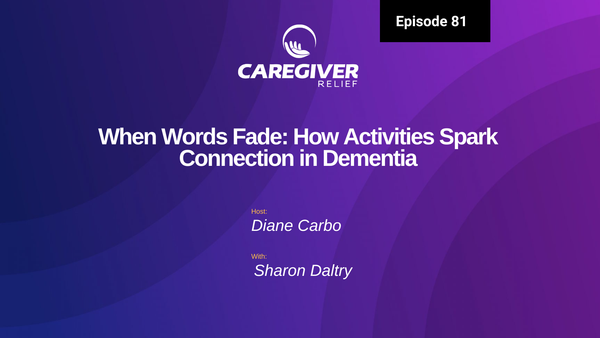Claudia Kawas and The 90+ Study: Insights on Longevity and Aging and Dementia
Living to 90 and beyond is a growing trend in the United States. This increased life expectancy creates both public health concerns.

The 90+ Study, a pioneering research project in clinical neuroscience, has significantly advanced our understanding of aging and cognitive abilities. Led by Claudia Kawas, a prominent figure in the field, this study focuses on the oldest segments of the population, particularly those over 90 years old. The UCI School has been instrumental in supporting this research, providing valuable resources and expertise.
Claudia Kawas, a geriatric neurologist, has played a crucial role in the 90+ Study, contributing her extensive knowledge in aging and dementia research. Her work emphasizes the cognitive and functional abilities of the elderly, shedding light on successful aging and Alzheimer's disease.
Study Overview
The 90+ Study, led by Dr. Claudia Kawas, is a groundbreaking research project that delves into the secrets of successful aging and the development of age-related diseases, such as Alzheimer’s disease and mild cognitive impairment. This ambitious study focuses on the cognitive and functional abilities of individuals aged 90 years and older, aiming to uncover the intricate relationship between vascular risk factors and cognitive impairment.
With over 2,000 participants, the 90+ Study meticulously examines the lifestyles, behaviors, and biological factors that contribute to longevity and health in our later years. By identifying the determinants of successful aging, the study aspires to develop strategies that promote healthy aging and prevent age-related diseases. This research not only sheds light on how we can live longer but also how we can maintain our cognitive and functional abilities well into our 90s and beyond.
Living to 90 and Beyond: Successful Aging
Discover what promotes healthy aging in seniors with The 90+ Study. Led by Co-Principal Investigators Claudia Kawas, MD and Maria Corrada, ScD, this study examines lifestyle practices, brain aging, and its relationship to cognitive decline, dementia development, and more in elderly participants.

The study also highlights the importance of understanding memory disorders and their significance in the context of the 90+ Study, which investigates the lives and cognitive health of individuals aged 90 and older.
A 60 Minutes Segment You Don't Want to Miss
Living to 90 and Beyond
The Co-Principal Investigators: Claudia Kawas, MD and Maria Corrada, ScD along with co-investigators Annlia Paganini-Hill, PhD and Dana Greenia, RN, MS study the oldest of old, in the The 90+ Study. The information that started this study is very interesting. In 1981, a retirement community was started in California. It was called. Leisure World and the study that was started was the Leisure World Cohort Study.
The 90+ Study continues to check up on those participants every six months. “The Leisure World Cohort Study was established to study the effect of modifiable lifestyle practices on longevity and successful aging when all residents of a California retirement community (Leisure World Laguna Hills) were mailed a postal health survey in 1981.
The definition of a birth cohort is “a group of people born around the same time who share similar experiences.” The 90+ Study was chosen because it was already a large cohort study in a retirement community that had been tracked long-term, and showed no signs of slowing down. This enabled the Co-Principal Investigators to study the long-term effects of aging on those living in Leisure World as they continued to age and investigate what factors lead to longer, healthier lives.
The research from The 90+ Study is also important for members of the military who are exposed to more environmental and physical stressors than the general public. Birth cohort studies can provide valuable insight into how these stressors can affect the physical and mental health of those in the military, and provide valuable information on the long-term effects of aging. By combining the results from The 90+ Study with the research being conducted by other groups, we can continue to gain knowledge about what factors contribute to longer lives.

Extensive birth cohort studies made this study possible
This study also provides insight into age-related diseases, helping us better prepare to deal with them in the future. This knowledge can help us develop strategies that are tailored specifically for those who have lived longer and experienced more illnesses as a consequence of aging. With continued study of The 90+ Study, we can gain an even greater understanding of how people continue to live and age successfully into their 90s and beyond.
New residents who moved into the community after this date were mailed the survey in 1982, 1983, and 1985. Of the 22,910 residents, 13,978 (61%) completed the questionnaire. The population and cohort are mostly Caucasian, well educated, upper-middle class, and elderly.
The baseline survey asked demographic information, brief medical history, medication use, personal habits (including cigarette smoking, activities, alcohol consumption), and select food and beverage frequency intake. All the participating seniors in the in the The 90+ Study were initially participants of the Leisure World Study. The study also examines conditions like hippocampal sclerosis, which is significant in understanding aging and its common mimicry of Alzheimer's disease.
The 90+ Study wanted to look at what determines longevity? What lifestyle choices promote living to 90 and beyond? Included in this study, was research on the development of dementia. How many developed a type of dementia? Are there changes in the brain that determine memory loss and dementia?

Healthy Aging and Birth Cohort Based Studies
I think you will be surprised at what the researcher have uncovered. Researchers from The 90+ Study have published many scientific papers in premier journals. Some of the major findings are: “People who drank moderate amounts of alcohol or coffee lived longer than those who abstained. People who were overweight in their 70s lived longer than normal or underweight people did.
About half of people with dementia over age 90 do not have sufficient neuropathology in their brain to explain their cognitive loss. People aged 90 and older with an APOE2 gene are less likely to have clinical Alzheimer’s dementia, but are much more likely to have Alzheimer’s neuropathology in their brains.
People who exercised definitely lived longer than people who didn’t exercise. As little as 15 minutes a day on average made a difference.
Forty-five was the best. Even three hours didn’t beat 45 minutes a day.” The transition from normal aging to preclinical Alzheimer's disease is a critical area of study, helping to identify early markers and potential interventions.
60 Minutes Living into Your 90's And Beyond 90 Part 1: Cognitive and Functional Abilities
Birth Cohort Study on Living to 90 and Beyond
The 60 Minutes segment delves into the fascinating research findings on aging and dementia. The study emphasizes the significance of clinical trials in understanding factors associated with successful aging and cognitive abilities in the elderly, particularly those aged 90 and older.
Living to 90 and beyond Part 2: Leisure World Cohort Study
According to a CBS News report, some people live to 90 and beyond. In fact, the average life expectancy in the United States is 78.7 years. But what drives some to reach those advanced ages? To answer this question, Lesley Stahl of 60 Minutes took part in an NIH-funded research study that followed 2,000 nonagenarians, aged 90 and older. The researchers discovered that the participants had nine traits in common: social connections, optimism, curiosity, resilience, mental agility, healthy diet, physical activity, spirituality, and sense of purpose.
Knowing these factors can help us understand how to pursue healthier lifestyles and potentially live longer. Through attitude and proactive behavior change, women who’ve made it to 90 and beyond have adopted habits such as eating a healthy diet, exercising regularly, maintaining a few pounds below their ideal weight, engaging in social activities, and using the power of optimism. They also make sure to stay mentally agile by challenging themselves intellectually and staying curious about learning new things throughout their lives.
Geriatric neurology plays a crucial role in understanding and treating memory disorders and dementia in older adults. Specialists in this field focus on the epidemiology of aging and Alzheimer's disease, which is essential for promoting successful aging among the elderly. By exploring the lifestyles of those who have lived past 90, the millennium cohort study military can better understand how members of the military can age successfully and reduce long-term health risks associated with aging. It will also provide valuable insight into how to manage physical and mental stressors that are unique to those in service. Continued studies on this topic will help us to better understand aging and how to prepare for a longer, healthier life.
The 90+ Study and the millennium cohort study military provide vital insight into how we can live longer and healthier lives in our later years. By understanding the factors that contribute to longevity, we can better manage our health over time. This knowledge is essential and will ensure that members of the military can age successfully and remain healthy for as long as possible. This, in turn, can help them to continue being productive citizens both inside and outside of service. With the collaborative efforts of The 90+ Study and those conducted by other groups, we can gain knowledge about how to improve the longevity of our current and
Research Methods
The 90+ Study employs a comprehensive approach to understand the cognitive and functional abilities of its participants. Here’s a closer look at the research methods used:
- Longitudinal Assessments: Participants undergo regular assessments of their cognitive and functional abilities. These include memory tests, cognitive evaluations, and physical examinations, providing a detailed picture of how these abilities change over time.
- Clinical Pathological Investigations: For participants who have donated their brains after death, detailed examinations are conducted to understand the biological factors contributing to age-related diseases. This helps in identifying the underlying causes of conditions like Alzheimer’s disease.
- Risk Factor Analysis: The study explores the relationship between vascular risk factors, such as hypertension and diabetes, and the development of cognitive impairment and Alzheimer’s disease. Understanding these connections is crucial for developing preventive strategies.
- Protective Factor Analysis: The research also investigates protective factors that contribute to successful aging. Factors such as education, physical activity, and social engagement are examined to understand how they help in maintaining cognitive and functional abilities.
- Comparison with Other Studies: To gain a broader understanding, the 90+ Study is compared with other significant studies, such as the Baltimore Longitudinal Study. This comparison helps in identifying universal factors that contribute to successful aging.
By combining these research methods, the 90+ Study aims to provide a holistic understanding of the factors that contribute to successful aging and the development of age-related diseases. This knowledge is vital for developing strategies that promote healthy aging and prevent cognitive impairment, ensuring that we can all enjoy a longer, healthier life.
You might also like this article:

















